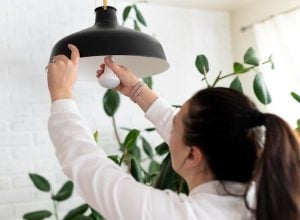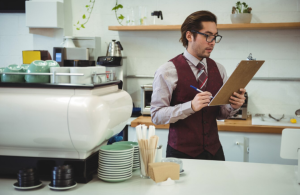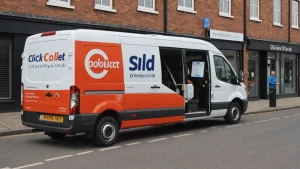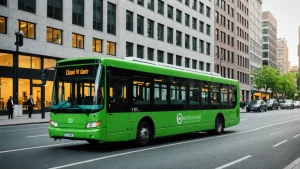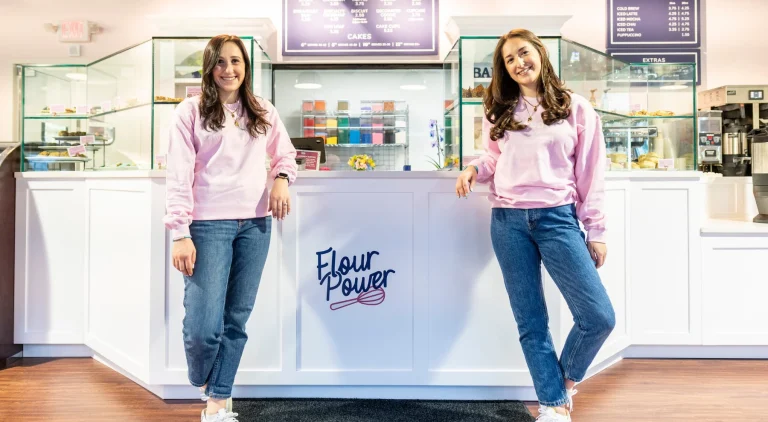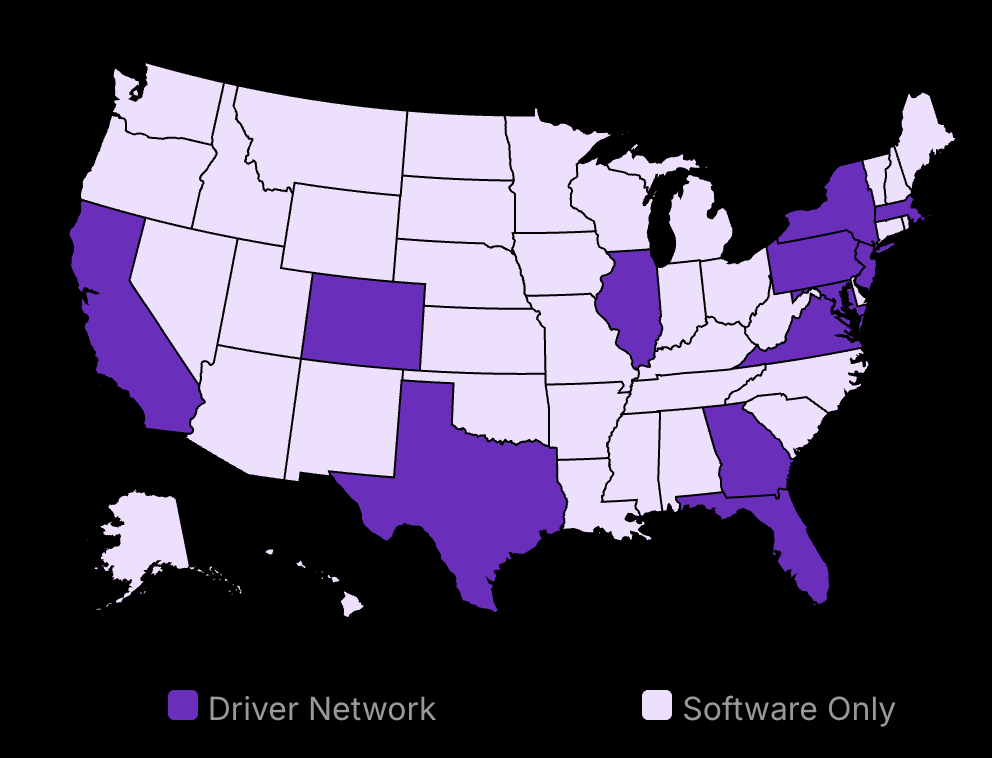Your coffee shop design plays a critical role in its success. The psychology behind this is clear: People don’t just buy coffee—they buy an experience. When customers walk into a café, their brain processes the environment in milliseconds. The lighting, seating arrangement, and overall atmosphere directly influence their decision to stay or leave.
Take the case of Third Wave Coffee in Portland. After a strategic coffee shop design overhaul in 2024, they saw a 45% increase in foot traffic. The key wasn’t expensive furniture or fancy art. Instead, they focused on customer flow patterns and strategic seating arrangements that made people feel both social and private at the same time.
Coffee shop design has evolved significantly since the first wave of coffee culture. Today’s successful cafés balance multiple elements: operational efficiency, customer comfort, and Instagram-worthy spots. However, most coffee shop owners make a critical mistake: they copy what works for others without understanding their unique customer base.
This guide examines practical coffee shop design strategies that increase foot traffic and keep customers coming back. We’ll look at real examples from successful coffee shops across the United States, backed by research and customer behavior studies from 2025.
By the end of this article, you’ll understand exactly how to transform your coffee shop design to attract more customers—without spending a fortune on unnecessary renovations.
Creating a Good Layout: Strategic Café Design Principles
Building a modern café can increase foot traffic.
Choose trends that align with customer tastes.
Colors and materials impact the café vibe.
Analyze Current Aesthetic Trends
There are several design styles currently dominating the café scene. Scandinavian design emphasizes simplicity and functionality, using neutral colors and minimal ornamentation. The rustic style, often incorporating reclaimed wood and vintage decor, provides a warm and inviting atmosphere without overwhelming the senses. Bon Appétit notes that plant-filled interiors and biophilic design, where elements of nature are integrated into the space, are becoming increasingly popular. By tapping into these trends, café owners can attract a modern crowd.
Successful cafes often balance these designs with unique, personal touches. For instance, Blue Bottle Coffee in Oakland is renowned for its open spaces and use of natural light, which appeal to those seeking a fresh, airy environment to relax and socialize. Observing such examples can help guide effective choices in design implementation.
Choose Colors and Materials Wisely
The choice of colors and materials plays a crucial role in shaping the café’s atmosphere. Earth tones and soft textures can create a cozy ambiance. Conversely, brighter colors can energize the space, making it suitable for shorter visits. According to a study by Environmental Psychology, colors like green and blue can reduce stress, while red and yellow can increase appetite and perception of warmth.
Sustainability is another significant factor. Using recycled or ethically sourced materials aligns with eco-conscious consumer values, creating an attractive narrative around the business. For example, Starbucks has incorporated sustainable materials in its stores, enhancing both aesthetics and brand image.
Decor and Furnishings
Investing in quality furnishings not only ensures customer comfort but also sets the tone for their entire experience. Durable materials prevent frequent replacements, saving costs in the long run. An example is Joybird, a company specializing in durable, mid-century-inspired furniture, known for both comfort and style.
Integrating local art can also tailor the café experience to its surroundings. This approach not only supports local artists but can intrigue customers, as seen in Arte details art cafes like Ojala in Munich. Such installations create talking points and entice repeat visits from art enthusiasts.

Save 80% of delivery management time
We handle everything:
- Dedicated operations manager
- Real-time tracking dashboard
- Automated customer notifications
- Urgent issue resolution
Mastering the Coffee Shop Floor Plan for Maximum Customer Engagement
Design wide walkways to make moving easy.
Mix seating options for varied customer needs.
Strategic counter-placement boosts efficiency.
Optimize Customer Flow
To create an efficient customer flow in your coffee shop, it’s crucial to consider both movement and experience. A well-managed flow reduces chaos and speeds up service, enhancing customer satisfaction. Reduced wait times increase sales. Let’s look at the steps to achieve this.
Design Wide Walkways
Wide walkways are essential. They help customers move comfortably without bumping into each other or the furniture. Ensure at least four feet of walkway between major areas, like entrances, the counter, and seating.
Use a floor plan to map out high-traffic areas. Consider counter height and product placement. These elements influence customer paths. Consider adopting elements of digital queue management systems.
Visual guides, like arrows or floor lines, help direct customer flow. This further ensures easy navigation for customers. If space allows, offer shortcut paths for regulars.
Strategic Counter Placement
Think about where the counter should go. It needs to be both visible and accessible. Ideally, place it near the entry but not blocking it. The spot must allow staff to see the entire seating area for efficient service. A centrally located counter helps with observing customer behavior and needs quick responses.
For operational efficiency, store essentials close by. Implement the rule of “first seen, first served.” Customers should immediately know where to order as soon as they enter.
If possible, integrate digital technology to track the flow better. This could further improve the experience without too many changes to the layout.
Seating Arrangements
The right seating arrangements cater to various customer preferences. They create a welcoming atmosphere whether someone stops by for a quick coffee or a long meeting. Let’s delve into making these choices work for your shop.
Provide a Mix of Seating Options
Offer a variety of seating. You should have tables for individuals, and groups, and bar-style seating at the counters. Bar seating works great for single customers or those wanting to chat while waiting. Group tables accommodate friends or meetings. Vary these with two, four, and even six-seater arrangements.
Balance comfort and functionality. Use durable materials that can withstand repeated use. Mix in a few comfy chairs or couches to create cozy corners. If space allows, consider a sofa area with coffee tables.
Separate zones with different vibes can cater to varying needs. Quiet areas for working customers or louder areas for groups increase satisfaction. Make these noticeable through varied lighting or decor, so customers instinctively know the purpose of each zone.
Ensure Pleasant Viewing or Social Experiences
Each seating area should offer either a pleasant view or a chance to socialize. Arrange seats near windows with views outside. This provides a break for customers and adds to the ambiance.
For social seating, face chairs and tables toward each other. This layout encourages conversations. Integrate positioning that lets customers enjoy central decorative features. These could be local art pieces or stylish interior elements, which were discussed in the section on café aesthetics.
Ensure comfortable spacing between tables. This avoids the cramped feeling that can arise when seats are too close. Regular feedback from customers will guide refinements. This helps maintain a seating arrangement that meets expectations and needs.
With these elements in place, you can significantly enhance customer satisfaction and boost foot traffic. To sustain this success, you should also focus on sourcing quality materials and supplies. Investing in reliable and stylish coffee shop supplies can elevate your offerings and overall customer experience. For comprehensive insights and recommendations, check out this insightful article on everything you need to know for coffee shop supplies success in 2025.
Another effective strategy to increase your coffee shop’s customer base is to explore coffee shop delivery services. Delivery options not only expand your market reach but also cater to the growing demand for convenience. Integrating delivery can complement your in-store experience, attracting new customers who prefer ordering from home or office.
Additionally, hiring the right personnel can greatly impact your cafe’s performance. Finding a skilled coffee shop manager is essential for creating a positive atmosphere and ensuring smooth operations. A capable manager can implement the design strategies effectively and engage customers, making your shop a go-to destination.
Enhance Sales with an Engaging Customer Experience
Boost foot traffic with interactive elements.
Build a sense of community to keep customers coming back.
Understand what customers need for a personalized experience.
Crafting memorable experiences can significantly enhance sales. According to Tony Hsieh, “Your brand is not what you sell; it’s the experience you deliver.” An engaging customer experience ensures that your coffee shop isn’t merely a place to grab a quick coffee but a destination. Here’s how to create that experience step-by-step.
Incorporate Interactive Elements
Interaction isn’t just a buzzword. It’s about creating points of connection that invite customers to engage beyond the transactional.
Community Board for Events and Announcements
Place a community board in a visible area where people naturally gather, such as near the entrance or waiting area. Use it to post local events, announcements, or community projects. This not only informs customers but also makes them feel part of a wider community. Regularly updating the board keeps it fresh and relevant.
Digital Screens for Menu Display and Promotions
Install digital screens that rotate through menu options, special promotions, and even customer testimonials. Screens should be eye-catching but not intrusive. They’re particularly effective near the ordering counter where customers can easily see them as they wait. Updating these displays frequently keeps the content dynamic and relevant.
Benefits of Interactive Features
Adding interactive features doesn’t just enhance customer experience; it can also streamline operations. Digital screens allow for quick menu updates without the hassle of reprinting, saving time and money. Interactive elements like a community board encourage repeat visits as customers check for new updates.
Foster a Community Space
Building a community around your coffee shop not only increases foot traffic but also creates loyalty. As Steve Jobs remarked, “Get closer than ever to your customers. So close that you tell them what they need well before they realize it themselves.” For coffee shop owners, streamlining operations can make a significant difference, especially during peak hours. Implementing a reliable Coffee Shop POS solution can enhance efficiency and improve customer experience by simplifying transactions and managing inventory effectively. To explore the top options available, check out our guide on the best POS systems for coffee shops.
Host Events or Workshops
Arrange regular events or workshops that cater to various interests. These could range from art shows, book readings, or local craft sessions. Events draw different crowds and can be promoted through your community board. Ensure that these events are well-organized and align with your brand values.
Encourage Regular Meet-ups
Designate a section of your café for regular group meet-ups, whether it’s a knitting group, a business network, or a book club. Building these traditions fosters a strong sense of community and belonging. Provide support by offering special deals or loyalty discounts for these gatherings.
Creating a Welcoming Atmosphere
A welcoming space helps people feel relaxed and willing to return. Comfortable furnishings, ample seating, and thoughtfully designed spaces encourage lingering. Combine this with personalized service to make customers feel uniquely valued. Each detail contributes to making your coffee shop a preferred local hangout spot.
Set the Mood with Ambient Coffee Shop Lighting
Lighting affects socializing and the atmosphere.
Natural light is cost-effective.
Well-chosen fixtures enhance the cafe’s vibe.
Select Appropriate Lighting Fixtures
Use Pendant Lights for Communal Tables
Pendant lights serve dual purposes. They provide light and add style. Choose designs that fit your shop’s look. For communal tables, hang them at different heights. This adds visual interest. Use a grouping of three for balance.
For installation, place them about 30 inches above the table. This is ideal for illumination without glare. Pendant lights also create a cozy area. They’re perfect for long conversations. Pendant fixtures should be easy to clean. Regular maintenance ensures they look good.
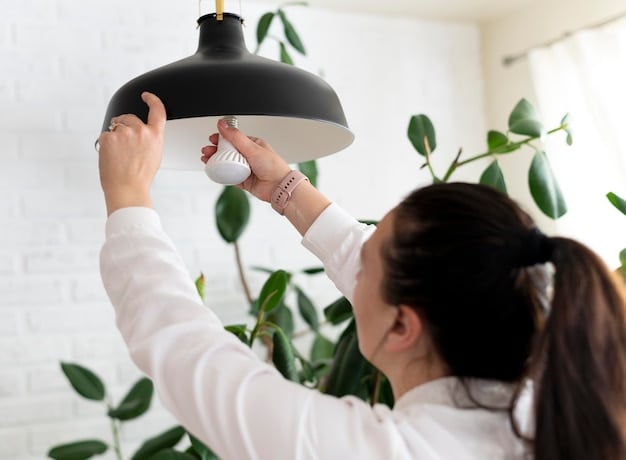
Opt for Warm Lighting to Create a Cozy Environment
Warm lighting creates a welcoming feel. Use bulbs with a color temperature of around 2700K to 3000K. These mimic the glow of sunlight. This is key for making spaces feel inviting.
Install dimmers for control over lighting settings. This allows for adjustments based on time or event type. For example, dim the lights in the evening. Encourage relaxation with subdued illumination.
Purchase LED bulbs for energy efficiency. They save money long-term and last longer. LEDs with high CRI (Color Rendering Index) make colors appear more vibrant. A CRI of 80 or above is suitable for your cafe. This ensures the ambiance enhances the customer experience.
Natural versus Artificial Lighting
Maximize Natural Light with Large Windows
Natural light provides benefits like reducing electricity costs. It also improves moods, encouraging longer stays. Consider installing large windows. They help bring in plenty of daylight. Position tables near these sources to let customers enjoy the view.
Window placement matters too. If your space allows, situate them facing east or west. This angle maximizes sunlight in both the morning and evening. If that’s not an option, use reflective surfaces around windows. Mirrors or light-colored walls direct light into darker areas.
For privacy, use translucent blinds. They diffuse light rather than block it. Choose ones that match your cafe’s decor. This detail maintains your aesthetic appeal while serving a function.

Balance with Diffused Artificial Lights for Evening Ambiance
Evenings require careful lighting planning. After sunset, diffused artificial lights maintain the atmosphere. They soften shadows and prevent harsh glares. Use options like wall sconces or track lighting. These direct light upwards, reflecting softly off ceilings or walls.
Position these fixtures at strategic points. Combine with ambient bulbs to blend with existing light levels. Edges of seating areas benefit from this type of lighting. It defines space without obtrusion.
LED strips along shelf edges offer subtle effects. They draw attention to architectural elements. They also prevent the interior from feeling cavernous during quieter hours. Regular testing ensures bulbs are functioning. Maintenance avoids disruptions.
Implementing lighting that mixes artificial with natural elements boosts engagement. More uniform lighting and higher light intensity enhance social interactions, a study notes. It combines daylight with artificial sources for conversation-friendly environments.
Advanced Tips for Refining Functional Interior Layout
Modular furniture increases flexibility.
Creative zoning optimizes small spaces.
Avoid clutter to enhance customer experience.
Small Space Utilization
Use Modular Furniture to Adapt to Busy Hours
Research Modular Options: Look for businesses that offer modular furniture. Aim for pieces that can serve multiple purposes, like tables that expand or chairs that stack.
Plan Your Space: Draft a floor plan. Identify high-traffic areas and quieter spots. Use this to guide where modular pieces will work best.
Purchase Wisely: Choose durable materials. Make sure the furniture fits the café’s style.
Training Staff: Ensure staff know how to reconfigure modular pieces smoothly. Run a training session, letting them practice during off-hours.
Monitor and Adjust: Observe how customers interact with the new layout. Make changes based on what works best.
Adding images of modular setups can help visualize different layouts. This helps in understanding how these pieces transform space.
Create Zones for Different Customer Needs
Identify Customer Needs: Think about different customer groups. Some come to work, others for socializing, and some for quick visits.
Designate Specific Areas: Use screens, low partitions, or furniture arrangements to create zones. For example, use cozy chairs and low lighting for relaxation areas.
Test and Adjust Zones: Gather feedback from customers to see which zones work. Don’t hesitate to tweak the areas based on what clients say.
Signage and Communication: Clear signs can guide customers to specific zones. Display these at entry points so people immediately know where they fit best.
Get creative with designing zones. This helps in catering to specific needs without sacrificing overall experience.
Common Pitfalls and How to Avoid Them
Avoid Over-Cluttering with Furniture
Inventory Assessment: List all furniture pieces. Decide which ones are essential and which can be stored away if not in daily use.
Minimalist Approach: Keep pathways clear. Ensure there’s space for movement and avoid unnecessary items.
Trial a Mockup Phase: Run a trial period with reduced furniture. Note changes in customer flow and satisfaction.
Customer Feedback Review: Regularly ask customers how they feel about the space. Use surveys or casual conversations to gather insights.
Over-cluttered spaces hinder flow and may affect experience. Be diligent in maintaining a balance.
Don’t Ignore Customer Feedback on Layout Issues
Chaulk it all Up: Set up a suggestion box. Encourage customers to leave notes on what they like or what they would improve.
Follow-up: Review feedback weekly. Identify common themes or recurring issues in customer complaints.
Incorporate Suggestions Promptly: Make adjustments based on the most frequent feedback. Thank customers personally if their ideas are implemented.
Celebrate Positive Change: When changes are made, let your customers know. Use social media platforms or in-store signage to communicate updates.
Ignoring feedback leaves money on the table. It can be the key to unlocking greater customer loyalty and satisfaction.
Continue refining your setup with these tips. They set the stage for effectively dealing with common issues in a bustling café setting.
Troubleshooting Common Issues
Handle customer feedback effectively by identifying frequent concerns.
Adjust design swiftly to accommodate fluctuating customer numbers.
Address Customer Complaints
Customer complaints offer valuable insights into design shortcomings. Addressing these can significantly enhance the customer experience.
Track Feedback for Recurring Design Issues
Set up a system to collect customer feedback. Use comment cards, digital surveys, or direct online reviews.
Regularly analyze feedback. Look for patterns and common complaints related to design.
Implement Changes Based on Frequent Suggestions
Prioritize issues that impact multiple customers. For example, consider seating discomfort or limited accessibility.
Develop a phased plan to address these issues. Start with minor changes that can be implemented quickly, then move to larger projects.
After changes are implemented, reassess customer satisfaction. Use the same feedback channels to track improvement.
Examples of Effective Feedback Systems
Successful feedback management comes from consistent engagement:
Launch a mobile app feature specifically for gathering design-related comments.
Encourage staff to ask customers directly about any design improvements they would like to see.
Adapt to Seasonal Crowds
Seasonal changes bring variations in crowd sizes and customer expectations. Preparation and adaptability are key.
Adjust Seating and Decor for Seasonal Events
Analyze the peak times and seasons. Holidays, local festivals, and academic schedules can greatly impact business.
Rearrange seating to accommodate higher customer influx during these periods. More communal tables may be utilized during busy months.
Implement Quick Changes to Maintain Efficiency
Prepare a flexible design blueprint that allows quick modification. This can include movable seating or decor that can be updated for different seasons.
Train staff to manage sudden layout changes. Ensure they know how to quickly reconfigure the space when needed.
Tools for Seasonal Adaptation
Tools and strategies that can aid in this transition:
Use modular furniture to easily adapt spaces for varying group sizes.
Employ seasonal decor that can be swiftly exchanged, reflecting the current seasonal themes.
Further Resources and Reading
Find books and case studies on coffee shop design.
Understand cultural differences in cafe design.
Learn about the importance of design in attracting and retaining customers.
Related Topics
The design of a coffee shop doesn’t just stop at aesthetics. Successful case studies can provide valuable lessons. Consider top-performing coffee shops such as Starbucks with its unique Third Place concept. They focus on creating a cozy, welcoming space distinct from home or work settings. Blue Bottle Coffee is another example, often referenced in design literature for its minimalist environments that draw attention to the coffee itself.
“The Starbucks Experience” by Joseph Michelli is a recommended read. It explores how the company leverages its store design to create a welcoming atmosphere.
Blue Bottle Coffee founders often share podcasts and articles about their philosophy of space, which can be insightful.
Additionally, how different cultures engage with cafe design is fascinating. Japan is known for its small, efficiently designed spaces, focusing on nuanced customer experiences. French cafes traditionally emphasize outdoor seating, encouraging a blend of indoor-outdoor experiences.
Why Design Matters in Coffee Shops
Design’s Role in Customer Retention
The design significantly impacts how often customers return. A well-designed shop can increase customer loyalty. According to a report by the National Coffee Association, 1 in 5 patrons returns due to a shop’s inviting environment. Design influences emotions and behaviors; hence, a comfortable and visually appealing design leads to longer dwell times and repeated visits.
Consider “Welcome to Starbucks” on Netflix—a documentary that illustrates how the brand uses scent, music, and decor to retain customers.
“The Design of Everyday Things” by Don Norman delves into the psychological aspects of design and how it affects user experience. Though not specific to cafes, its principles apply effectively.
“In the Company of Women” by Grace Bonney features insights on creating unique and personalized spaces that maintain customer allure.
Design as a Strategic Marketing Component
Beyond retention, design acts as a marketing strategy. By standing out visually, coffee shops harness appeal to attract new customers. Sources report that cafes with distinctive designs experience foot traffic increases after a redesign. Design choices often communicate a company’s brand ethos and values.
Architects and marketers often debate whether form or function is dominant in retaining customers. Some argue for a heavier emphasis on aesthetics, suggesting that the visual draw lures customers. Others focus on functionality, maintaining that convenience and comfort ground customer loyalty.
To dive further into this topic, look into “Marketing Aesthetics” by Bernd Schmitt, which outlines the connection between aesthetic preference and brand strategy. This book delves into how design can amplify brand messages effectively.
These leads give you a robust starting point. You’ll find nuanced studies and reflections on how strategic design contributes to a coffee shop’s success.
Elevate Your Interior Design
A well-designed coffee shop does more than serve drinks—it creates experiences that bring people back. The principles we’ve discussed show that success comes from careful attention to architecture, layout, lighting, and community spaces.
Good design starts with understanding how people move and interact. Wide walkways, smart counter placement, and varied seating options make customers feel comfortable. Providing access to cozy corners for working on a laptop or open spaces for group conversations ensures a welcoming environment. Natural light through large windows, combined with warm artificial lighting, sets the right mood throughout the day.
The most successful coffee shops adapt and change. They listen to customer feedback, adjust their spaces for different seasons, and create zones that serve multiple purposes. They balance aesthetics with function, using high-quality materials and furniture that last a lifetime. Even older design elements, when refreshed properly, can add charm and character.
Don’t overlook the small details—stylish paper menus, well-displayed magazines, and thoughtfully plated pastries all contribute to the experience. These elements make a lot of difference in how customers perceive and enjoy the space.
Remember that design is an ongoing process. Start with one area—perhaps the lighting or seating arrangement. Test it, get feedback, and refine it. Then move to the next improvement. Small changes add up to significant results.
Finally, your coffee shop can become a landmark in your community. With these design principles as your foundation, you’re ready to create a space that makes customers happy and keeps them coming back. Whether it’s a quiet corner for reading or a vibrant hub for social gatherings, every effort you put in will pay off in the long run.



